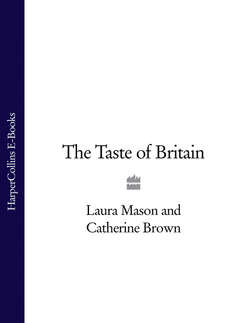Читать книгу The Taste of Britain - Hugh Fearnley-Whittingstall - Страница 54
HISTORY:
ОглавлениеEels were once a staple of fish-day diet. Medieval household accounts devote more entries to them than almost any other species of fish (Woolgar, 1992). Small wonder, therefore, that their fry should be esteemed as delicacies. The River Severn has long been noted for the vast numbers of elvers it attracts. Neufville Taylor (1965) mentions an elver net in a domestic inventory dated 1587 and Daniel Defoe (1724-6) remarked on elver-cakes sold at Bath and Bristol. White (1932) states elvers in large baskets were being cried through the streets of Gloucester even after the First World War. The fish products of the Severn estuary were important regional symbols, whether the salmon, the elvers or the lampreys - the Corporation of Gloucester sent a lamprey pie to the reigning monarch every year until 1836. Elvers are caught from the Somerset Levels up the Severn as far north as Tewkesbury. Villages some way from the bank have memories of elver cookery. FitzGibbon (1972) records instructions for elver pie (made as a sort of pasty) from the village of Keynsham, half way between Bristol and Bath on the River Avon.
Elvers have remained a popular food in the region, but they are now very expensive, and much of the catch is exported, some going as stock for eel-farms (Green, 1993). Furthermore, a study undertaken by Brian Knights to investigate the declining catch of elvers from the Severn in the 1980s concluded that oceanic cycles had affected numbers.
There are several local methods for cooking elvers, including flouring and deep frying; and frying in bacon fat then adding eggs to make a type of omelette. Alternatively, they are steamed to make a loaf. There are elver-eating contests in the villages on the lower reaches of the Severn on Easter Monday. During the season, between the spring tides of March and April, fresh elvers can be bought from local markets.
